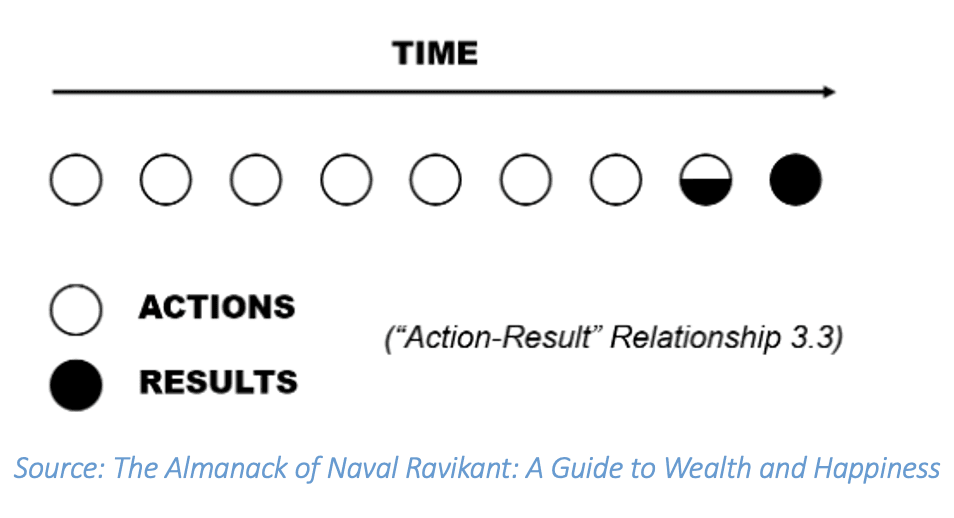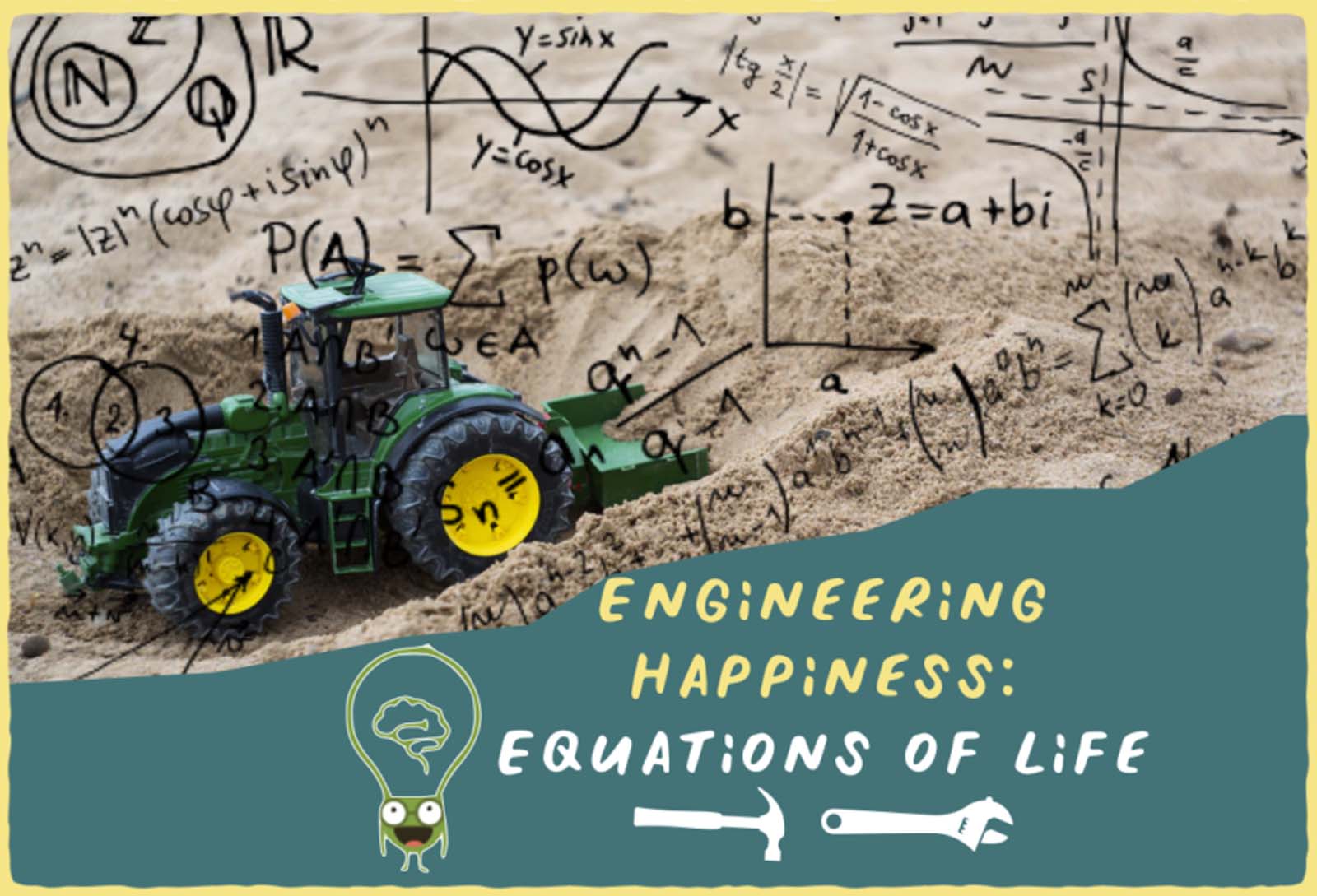TLDR: Deep down, we want happiness. Happiness is something that can be cultivated systematically – it starts inwards. Although it is not easy, it is very worth it.
I realized from a young age that what I wanted in life was to be happy and that all my pursuits in life arch towards either instant or delayed gratification. With time, I noticed that this was a common human condition – we all want happiness, and fear pain! And perhaps the only reason why we pursue different things in life is because our definition of what brings happiness differs.
Being the scientific and engineering nerd that I was, I started my search in secondary school to find the ultimate life “hack” to happiness. I read widely and listened to talks by people who were smarter and wiser than me.
Over time, I found certain common underlying principles (or equations) that described what I experienced in life well.
1) The Happiness Equation
Observing the various ways people seek happiness, I noticed they converge upon 2 main methods (refer to equation 1.1):
· Method A: Having more things (increasing the numerator); or
· Method B: Wanting fewer things (decreasing the denominator)
This is apparent in how different people who have similar things (i.e common numerator) can have vastly different levels of happiness. For example, $100 is a fortune to a beggar, but small change to a millionaire. Both Methods A and B described above are valid routes to happiness, but require very different kinds of effort.
Method A (having more things) entails relentless external work to ensure the constant accumulation of possessions. Meanwhile, Method B (wanting fewer things) requires a deep commitment to inner work to cultivate the subtle craft of gratitude and contentment.
It is tempting to take the higher/nobler stance and claim that “wanting less is the way to go!” However, for the majority of us who are not renunciants (monks/nuns), it would be quite presumptuous to claim that we are not attached to at least some desires/possessions. While it is normal for laypeople to pursue some amounts of pleasure and fun, it is also important to be aware of the relationship between “having” and “wanting”.
I found that no matter how much I acquired, I was never satisfied – simply because the more I had, the more I wanted!
This phenomenon of hedonistic adaptation is well-studied by psychologists, and it describes how humans tend to adapt to pleasures/simulation in life. We require more intense simulation the next time round to get the same amount of happiness (similar to drug addicts, really). A common example is how lottery winners often return to their default state of happiness (or unhappiness) after the initial novelty of their prize wears off.
Considering the above, I decided a few years back that while I may never become a full-fledged renunciant, I would strive towards reducing my “wants” and cultivate contentment as my game-plan for happiness.
2) The Theory of Change
Making this choice to reduce my “wants” was the easy bit. Quickly, I realized that my “wants” were not leaving without a fight.
I also realized that this inner battle was not fought on a single front, but was instead spread across many skirmishes throughout various aspects of my life!
I realized that reducing my “wants” meant choosing a healthier Kway Teow Soup instead of the sinful Fried Kway Yeow for lunch; it meant not sending a paggro (passive-aggressive) text when I had to cover work for my teammate, and it was about being disciplined enough to Work-From-Home at 3 pm after lunch instead of Sleep-At-Home.
It was about being patient when irritated, and being calm when excited. More than anything, this inner work called for complete honesty about my flaws and imperfections – and committing to work on them for the rest of my life.
I found that reducing my “wants” was a big ambition indeed! But I also reflected that perhaps most of us may never really achieve a singular “big” change in life.
Rather, the biggest change comes from a compilation of small efforts – and the smallest things are everything (refer to equation 2.1).
3) The Happiness Graph
To direct all our efforts towards reducing “wants” instead of increasing “haves” is certainly the tougher path that is less travelled – but are other pursuits worth a similar heroic effort? To answer this, I plotted the long-term “happiness forecast” arising from adopting both Methods A and B (refer to equation 1.1).
Taking a closer look at my everyday experiences, I noticed that the pleasures that can be derived from our senses, while no doubt enticing, are still ultimately limited and transient.
Coupled with the rule of hedonistic adaptation, I found that the greatest joys – and tragedies – when mapped onto the greater scheme of life, often account for little more than minor blips on our happiness scale (refer to graph 3.1).
For all my efforts and strivings through decades in life, I realized that if they were not directed in the right direction, I will likely find the 80-year-old me not all that happier than my 8-year-old self. That was a really sobering thought!
Method B takes on a far more positive outlook. By observing the examples of well-practised spiritual teachers committed to the cultivation of contentment and gratitude (amongst other spiritual qualities), I saw that with the right effort and method, it is possible for one’s happiness to steadily increase with time (refer to graph 3.2). I experience this within myself as well.
As I continue to invest in my inner work and spiritual cultivation, I notice that I have a brighter mind-state, a more resilient spirit, and a more caring and compassionate stance towards others compared to 8 years ago (2013) when I begun my spiritual practice. Of course, there are days when the lights get dimmed – but as a whole, I am happy, which is all I ever wanted!

Equations can only get us so far. What we encounter in our everyday lives is the practical lab where the spiritual rubber meets the road.
As we journey on through life, instead of always wishing for a smooth problem-free ride, perhaps a more worthwhile aspiration to have is to grow the requisite mindfulness and wisdom to view each living moment as an opportunity for spiritual growth.
It is a life (or countless lives) time work – but what could be more worth it?
Wise Steps:
- Take ownership of our happiness – don’t blame external circumstances
- Start a small habit
- Persist in the practice


